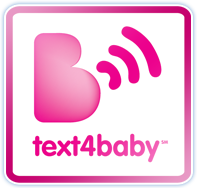My 10 month old has a constantly runny nose. Could it be possible that he has allergies instead of a cold?
While not impossible, it would be unusual for your 10 month old to have allergies. More likely, he has had a series of colds that have run together over the last 6-8 weeks that make it seem like his nose has never been dry. Infants lose the immunity they received from their mother at birth between 6-9 months of age, so suddenly they are susceptible to millions of germs. This occurs just as they become more mobile and love to put things into their mouth. Thus, germs easily gain entry and make your child ill. The nasal congestion associated with a cold may last 10-14 days. The typical progression is for the mucous to be clear initially but become thick and yellow midway through the cold. The change in color is NOT significant. The average child has 6-7colds per year though a child in daycare may have 8-10 colds a year; meaning they are sick 2 weeks out of every month. This may seem like a chronic runny nose.
Another cause of persistent runny nose to consider is exposure to cigarette smoke since it is known to lead to more frequent upper respiratory infections and chronic coughs in children.
Is the nasal drainage from one nostril or both? If it is just from one side and smells foul, you may need to have your child’s nose checked for a foreign body.
On rare occasions infants may develop sinus infections so if you have concerns about your child’s runny nose, be sure to discuss them with their pediatrician.
My baby was just diagnosed with Fifth’s Disease. What is this, and how is it treated?
Fifth’s disease is an illness caused by the human parvovirus B19. It got its name because it was the fifth childhood illness with a red rash to be described, the first four being: scarlet fever, measles, german measles and roseola.
Typically, children develop very red rash on their cheeks giving them a “slapped cheek” appearance. One to three days later, they develop a lace-like rash on their neck, upper arms and thighs. While the rash looks very dramatic, it is typically otherwise a mild illness with very little or only low grade fever, and a slight runny nose and sore throat. The lacey rash may come and go for weeks afterwards with sun exposure, or exercise.
The disease is contagious before the rash starts, so a child with the rash may go to school. If exposed to Fifth’s disease over half the children will develop the rash within the incubation period of 10-14 days. Because the disease is caused by a virus, there is no treatment and luckily, the rash while dramatic, is usually not bothersome.
I am confused. Does my 7 year old have to ride in a booster seat in the car? Why can’t they just use the seat belt?
Effective July 1, 2004, all children under the age of 9, who are less than 5 feet tall are required by Tennessee law to be restrained in a car in a BOOSTER SEAT. Failure to do so, e.g. just a seat belt, will result in a $20.00 fine. The rational behind this law is that the standard seat belt in a car is not designed to adequately restrain children who are less that 5 feet tall or less than 60 pounds in event of an automobile accident. The length of their legs does not allow their backs to fit firmly against the back of the seat to allow the lap belt to fit snugly over their hips and pelvis. Consequently, the lap belt rides up over their abdomen leading to more devastating abdominal injuries in car accidents. If their trunk isn’t tall enough, the shoulder belt rides up over their neck leading the child to place the shoulder belt behind the back or under the arm which could result in ejection or severe abdominal injuries in crashes. Some parents instead try seat belt positioners which pull down the shoulder belt off the neck, but also raise the lap belt up over the abdomen instead of the hips, thereby, increasing the risk of serious abdominal injuries. These are just as dangerous as a regular seat belt in a child who is too small.
A booster seat positions the child so that the lap belt correctly uses the hips to anchor the lower body, and the seat also has a slot to hold the shoulder harness in the correct place across the chest. A child is ready for just a lap/shoulder belt when their 1) back and buttocks are against the seat 2) knees are bent over the edge of the cushion, 3) shoulder belt is across the shoulder, and 4) the lap belt fits over the thighs. This is generally when they are 60-80 pounds and 56-60 inches tall.
Remember, if your child is less than 9 years old and less than 5 feet tall, it will soon be required by law that they be in a booster seat if they are in a car. However, you know NOW why it is safer for them to be in one so don’t wait!
The information and content on our website should not be used as a substitute for medical treatment or advice from your doctor.




